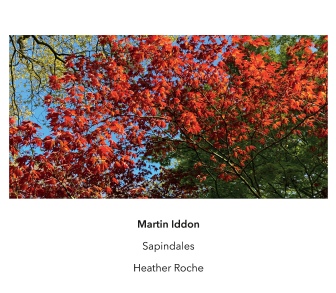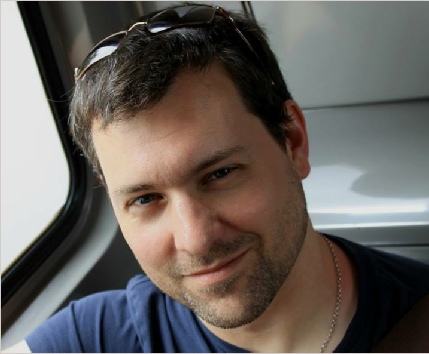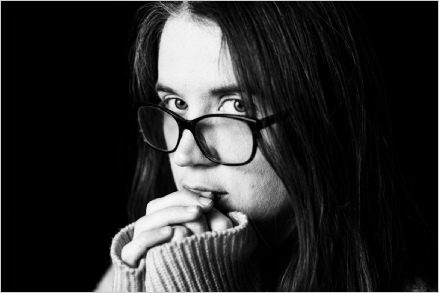Another Timbre TimHarrisonbre
Interview with Martin Iddon
All the pieces on the CD feature the clarinet (or one or more instruments within the clarinet family). So do you have a particular fondness for the instrument?
My first thought was ‘no, not especially’. But then I remembered I was at a concert just the other day when I briefly thought ‘why does anyone ever write for anything other than the bass clarinet?’ So it looks like my first thought’s probably not quite true! I certainly love the sound the instrument makes. But I don’t feel particularly close to the instrument, in the way that I do with stringed instruments or the voice, to which I have a much more tactile, visceral relationship, doubtless a product of the fact that, to the very limited degree that I’m a performer, those are my instruments. But even though, as Heather Roche will tell you, my writing for the clarinet is hardly idiomatic, it also doesn’t feel distant from me, as I think is the case with brass instruments, say (though I like that distance too; it can be really productive). I think with the clarinet, though, there’s a sort of tension in the almost familiar, almost alien relationship I feel like I have with it, and that also plays out in interesting ways in the sorts of things I ask it—and, here, Heather—to do, especially in the ways in which the clarinet absolutely can do glissandi—and a lot of what I write features glissandi—but not in the neat, clean way that a violin or a voice can, or not universally or uniformly so across the instrument. You can always feel the physical presence of the performer making it happen, perhaps even more so in what might otherwise be more languid music, as in the piece, Sapindales, itself.
Were all the pieces on the CD specifically written for Heather Roche?
Two of the pieces, Ptelea and Sapindales, were written for Heather, and the latter is a sort of derivative or, better, generalisation of the former. It’s got all the same notes, pretty much, but not (at all) in the same order.
Let’s start with 'Ptelea', which I guess is the earliest of the four pieces on the disc, and the only 'real'/normal solo piece, in that the clarinet is completely unaccompanied. Firstly what does the title refer to, and do you see it as apart from the other pieces on the disc stylistically?
Ptelea is one of my hamadryads pieces, all of which are offshoots from an earlier vocal quintet, which is on my first Another Timbre release, pneuma. They’re all different treatments of Josquin’s motet, Nymphes des bois, that is, hamadryads. Ptelea is named after the hamadryad that was bonded to the elm.
Although it sounds like a normal(-ish) solo piece, the notation is actually a polyphonic one: the clarinettist has up to four different lines to play at the same time, all of which are given in the form of glissandi. That’s quite impossible, but the clarinettist is asked to retain as much of this information as possible. One way of doing that, of course, is similar to all the other pieces on this disc: by layering the four lines on top of one another. But there’s something particularly engaging, I think, in the impossible attempt to do that as a ‘true’ soloist. I suppose I think of Ptelea, in this version, as more like a mirror image of the other pieces on the disc.
hamadryads is, itself, part of a sort of cycle of pieces, each of which is derived from a successive series of fifteenth-century laments: Ockeghem’s Mort, tu as navré de ton dart, written on the death of Binchois, Josquin’s Nymphes des bois written on the death of Ockeghem, and Gombert’s Musae iovis, written on the death of Josquin. The two other pieces from that set, tu as navré and Muses, are both on this disc.
The other pieces all involve layering of different parts, which were recorded separately, and then combined. Was this way of working partly a result of Covid isolation, or was it something you were already particularly interested in, and why?
In fact, tu as navré is the oldest piece here and it’s the first piece where I worked with independent lines or layers which had relationships to one another but which were mobile, in that each instrumentalist could decide when they wanted to begin their part, with further decisions to make about lengths of longer notes and pauses within the part. It’s hardly an original idea, but it seemed coherent to me with a high Renaissance way of thinking about the mutability and malleability of material, especially in the form of the puzzle canon, which is a conceit that lies behind a lot of what I do: I’m thinking, for instance, of Pierre Moulu’s Missa Alma redemptoris mater, which can be sung either with or without its longer rests. Given that pretty much everything I write is concerned with the music of the high Renaissance, one way or another, it’s probably no surprise that this sort of thinking in layers or strips has turned into an integral part of what I do.
Though none of this was designed to have anything to do with pandemic-style working, it did make it at least comparatively straightforward to record things independently of one another and then re-combine them, since they were designed to afford that sort of way of working, just for very different reasons.
In fact, during one of the lockdowns in the US, ekmeles did a lovely online version of hamadryads with each of the singers in their own home, which worked really well with a piece that wasn’t (quite) designed in the same way.
What does the title tu as navré refer to, and why the unusual bass-heavy instrumentation?
It’s an abbreviation of the title of the motet that the pitch material comes from, Ockeghem’s Mort, tu as navré de ton dart (that is, ‘Death, you have wounded with your dart’). I think I was given the instrumental line-up with the commission, which was for a concert with Ensemble SurPlus to celebrate the life of their founder, conductor, and pianist, James Avery. I was a bit surprised to be invited, actually. Though I’d had a great experience with SurPlus at Schloss Solitude, when they played my string trio, …à son dernier soupir, brilliantly, I hadn’t realised—and only later discovered—that it had been James who, faced with quite a minimal score that didn’t really give much indication of what it sounded like, said ‘why don’t we presume he knows what he’s doing and give him a chance?’ That performance was also one of the first times that I thought I might know what I was doing, so I’m incredibly grateful to James for seeing it before I did.
Can you tell us about the sung text in Muses, and how this piece came about?
There’s not an awful lot to tell. Muses is the third piece in that cycle of laments or memorials that I mentioned. The Stuttgart-based duo, Noise-Bridge, that’s Christie Finn (soprano) and Felix Behringer (clarinet), asked me for a piece. Because the first piece, tu as navré, had a lot of clarinets in it (well, two, but that seems quite a lot of clarinets for a quartet) and the second, hamadryads, is for voices (and Christie sang in the premiere too!), it seemed the right opportunity.
The text is a sort of obliterated version of the text from the Gombert motet that the piece is based on. It’s got exactly the same statistical distribution of vowels and consonants as the original, but randomly reordered and, as it happens, I don’t think anything from the Gombert is ultimately retained as such. If I remember rightly, the text in hamadryads works in a similar way.
The field recordings in Sapindales are wonderful. Where did you make them, and does the place have any particular significance? And have you used field recordings in other of your pieces?
I’m glad you like them (or, I should say, it: it’s a single, unedited recording - apart from a little eq-ing). It’s from Moorlands Nature Reserve, a little bit of woodland just around the corner from home, which was something of a sanctuary over the past year or so. What’s most spectacular there are probably the azaleas and rhododendrons, which are ericales, of course, not sapindales (though there are some beautiful maples, which are). But there is—or rather was—a very beautiful, but old and fragile snake bark maple, so-called because of its remarkable, striated bark, that I was struck by on the first visit. By the second visit, just a few weeks later, the tree had been felled which seemed, in a fairly direct and obvious way, rather poignant in the context of the pandemic. So I made the recording for Sapindales there. I went and sat there for a couple of hours early one morning and was about to decide I probably had enough when some magpies arrived, which you can hear toward the end of the piece and which, when I heard them, I knew had to be at the end, so was enormously relieved that the previous twenty or so minutes sounded okay.
I’ve ended up using field recordings quite a bit recently. In Leuke, for instance, which is a solo cello piece I wrote for Séverine Ballon. Leuke was the name of another nymph—named for the white poplar, with its rather unusual two-sided leaf, one side green, one white—I took a recording at the base of the nearest white poplar I could find, which is in Homestead Park in York: inevitably there are plenty of birds in that recording and, since it’s quite close to the station, even a just-audible train, which I like as a sort of inadvertent call-out to Schaeffer’s Étude aux chemins de fer. Evan Johnson heard a performance and told me that he thought I should have birds in all my pieces from now on.
Other field recordings are much more prosaic: aigeiros uses a recording of an extractor fan which never really managed to get going properly, while Lampades has one of the radiator in my office at work when there was something wrong with it (the radiator that is, not the office). So it looks like I’m either using trees or malfunctioning machinery at the moment.

at179 Martin Iddon - ‘Sapindales’
Heather Roche (clarinets) with Juliet Fraser, Anton Lukoszevieze & James Opstad
1. ‘Muses’ (2017) 15:19
Heather Roche (clarinet) Juliet Fraser (voice)
2. ‘Ptelea’ (2014) 10:47
Heather Roche (bass clarinet)
3. ‘tu as navré’ (2010) 10:55
Heather Roche (bass and contrabass clarinets) Anton Lukoszevieze (cello) James Opstad (bass)
4. ‘Sapindales’ (2020) 21:11 youtube extract
Heather Roche (clarinets) Martin Iddon (field recording)
CD copies sold out, but downloads available from our Bandcamp page here

Martin Iddon



Heather Roche (photo by Sam Walton)